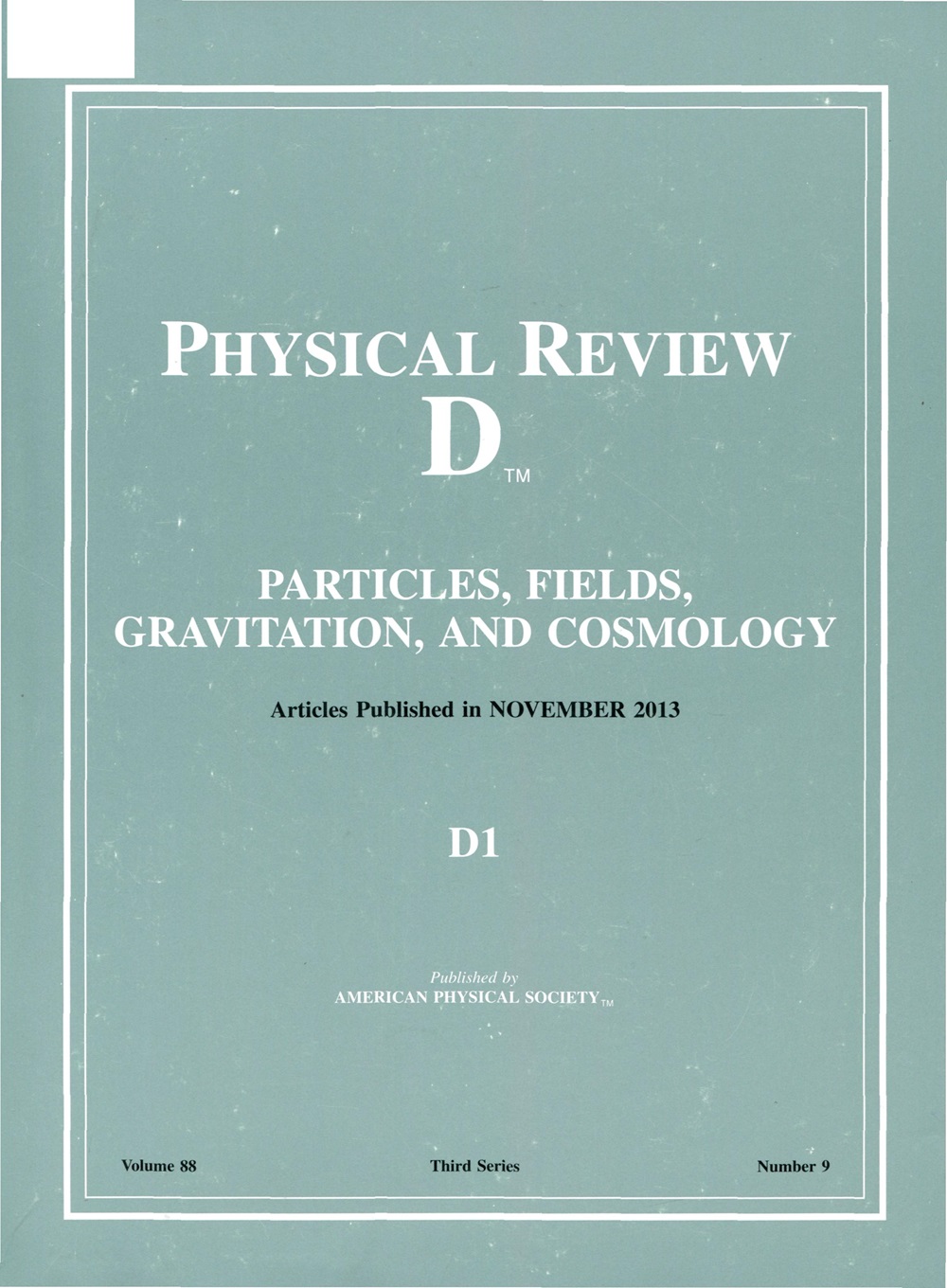Schwinger-Keldysh闭时径形式主义中的威尔逊重整化群和热场理论
IF 5.3
2区 物理与天体物理
Q1 Physics and Astronomy
引用次数: 0
摘要
在Schwinger-Keldysh闭时路径(CTP)形式下,研究了有限温度下单环阶标量理论的微扰wilson重整化群(RG)。通过显式地整合出UV模式,我们展示了如何有效地耦合CTP轮廓的两个分支。这提供了文献中使用的有效CTP作用类型的微观推导。虽然完全有效理论没有临界点,但我们继续研究RG流在复杂耦合的简化空间中的临界特性,这些特性表征了某些时间顺序相关器,并表明在d=4时空维度上存在两个新的不动点。我们将一个与已知只存在于4 - ε维的Wilson-Fisher不动点联系起来,另一个与标准高斯不动点联系起来。2025年由美国物理学会出版本文章由计算机程序翻译,如有差异,请以英文原文为准。
Wilsonian renormalization group and thermal field theory in the Schwinger-Keldysh closed-time-path formalism
We study perturbative Wilsonian renormalization group (RG) for the scalar ϕ4 theory at finite temperature to one loop order in the Schwinger-Keldysh closed-time-path (CTP) formalism. By explicitly integrating out the UV modes, we show how effective interactions coupling the two branches of the CTP contour arise. This provides a microscopic derivation of the type of effective CTP actions used in the literature. While the full effective theory has no critical points, we instead proceed to study critical properties of the RG flow in a reduced space of complex couplings that characterize certain time-ordered correlators and show the existence of two novel fixed points in d = 4 4 − ε Published by the American Physical Society 2025
求助全文
通过发布文献求助,成功后即可免费获取论文全文。
去求助
来源期刊

Physical Review D
物理-天文与天体物理
CiteScore
9.20
自引率
36.00%
发文量
0
审稿时长
2 months
期刊介绍:
Physical Review D (PRD) is a leading journal in elementary particle physics, field theory, gravitation, and cosmology and is one of the top-cited journals in high-energy physics.
PRD covers experimental and theoretical results in all aspects of particle physics, field theory, gravitation and cosmology, including:
Particle physics experiments,
Electroweak interactions,
Strong interactions,
Lattice field theories, lattice QCD,
Beyond the standard model physics,
Phenomenological aspects of field theory, general methods,
Gravity, cosmology, cosmic rays,
Astrophysics and astroparticle physics,
General relativity,
Formal aspects of field theory, field theory in curved space,
String theory, quantum gravity, gauge/gravity duality.
 求助内容:
求助内容: 应助结果提醒方式:
应助结果提醒方式:


